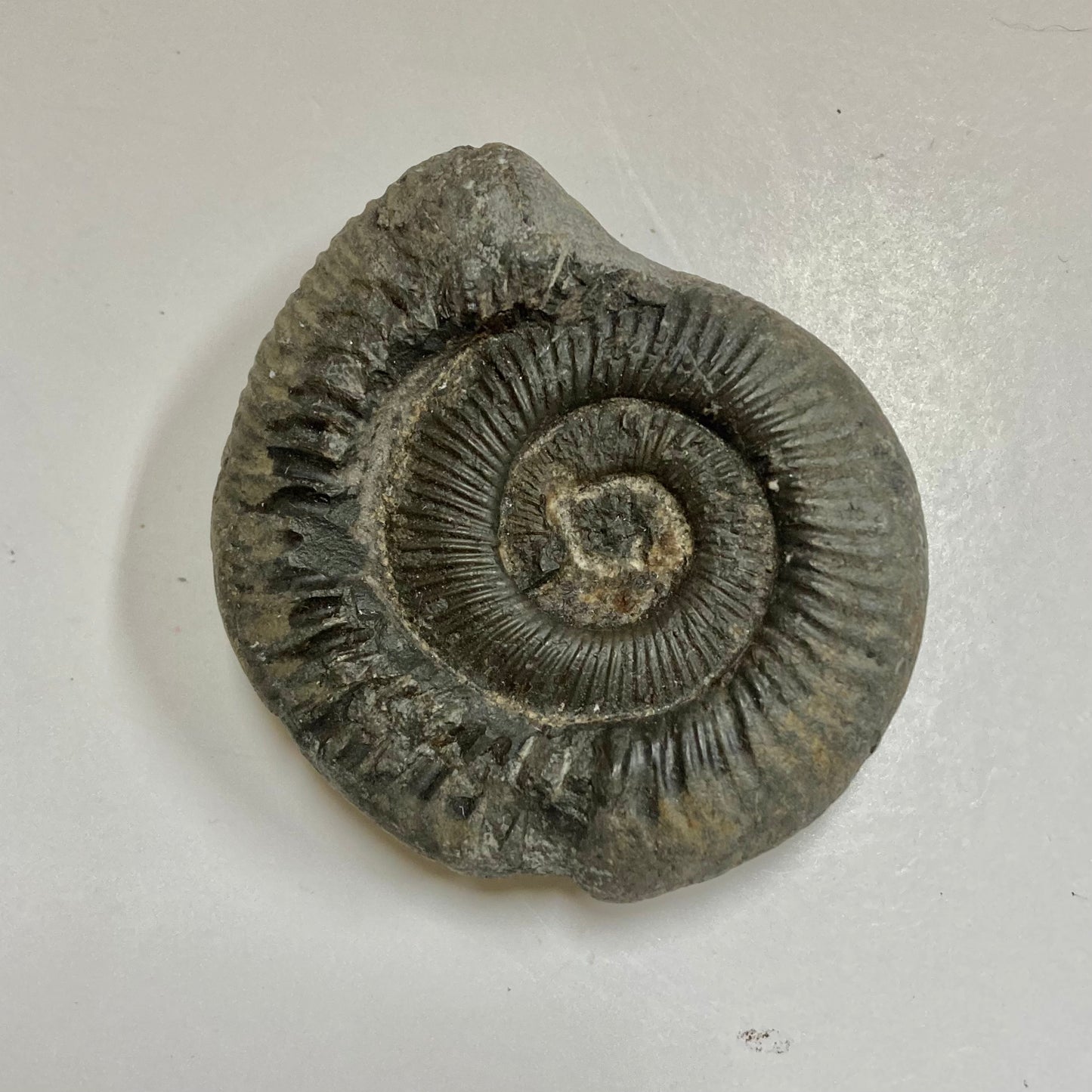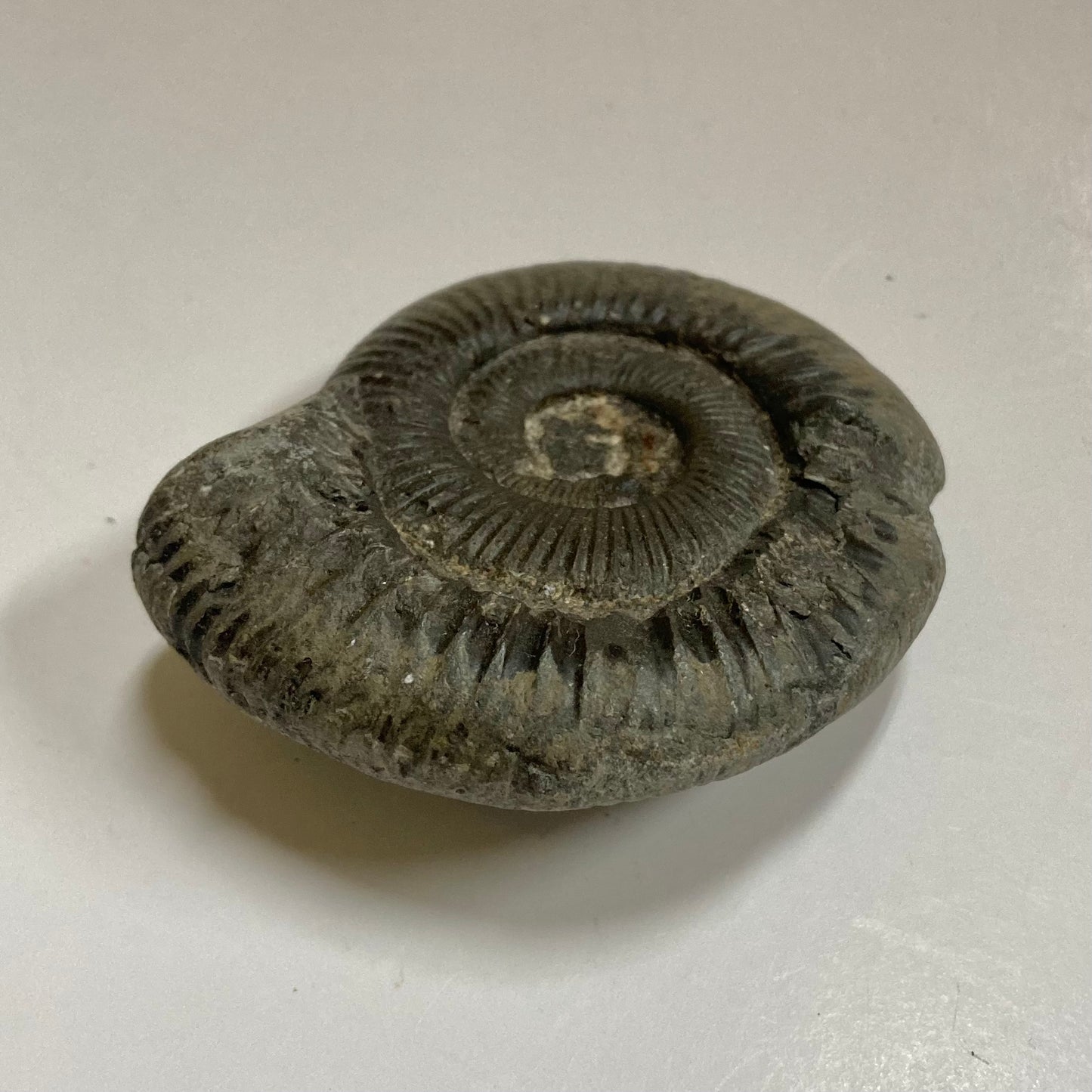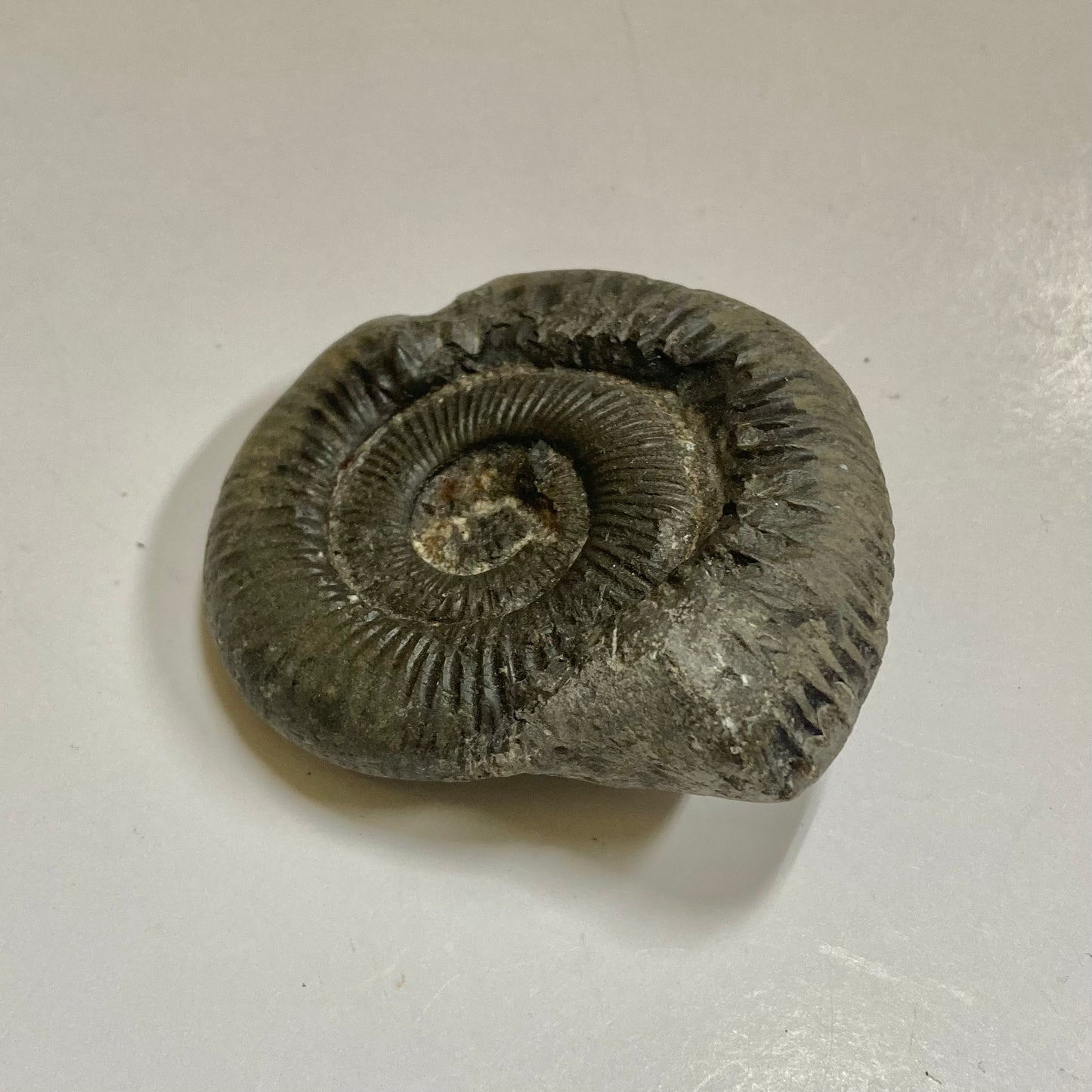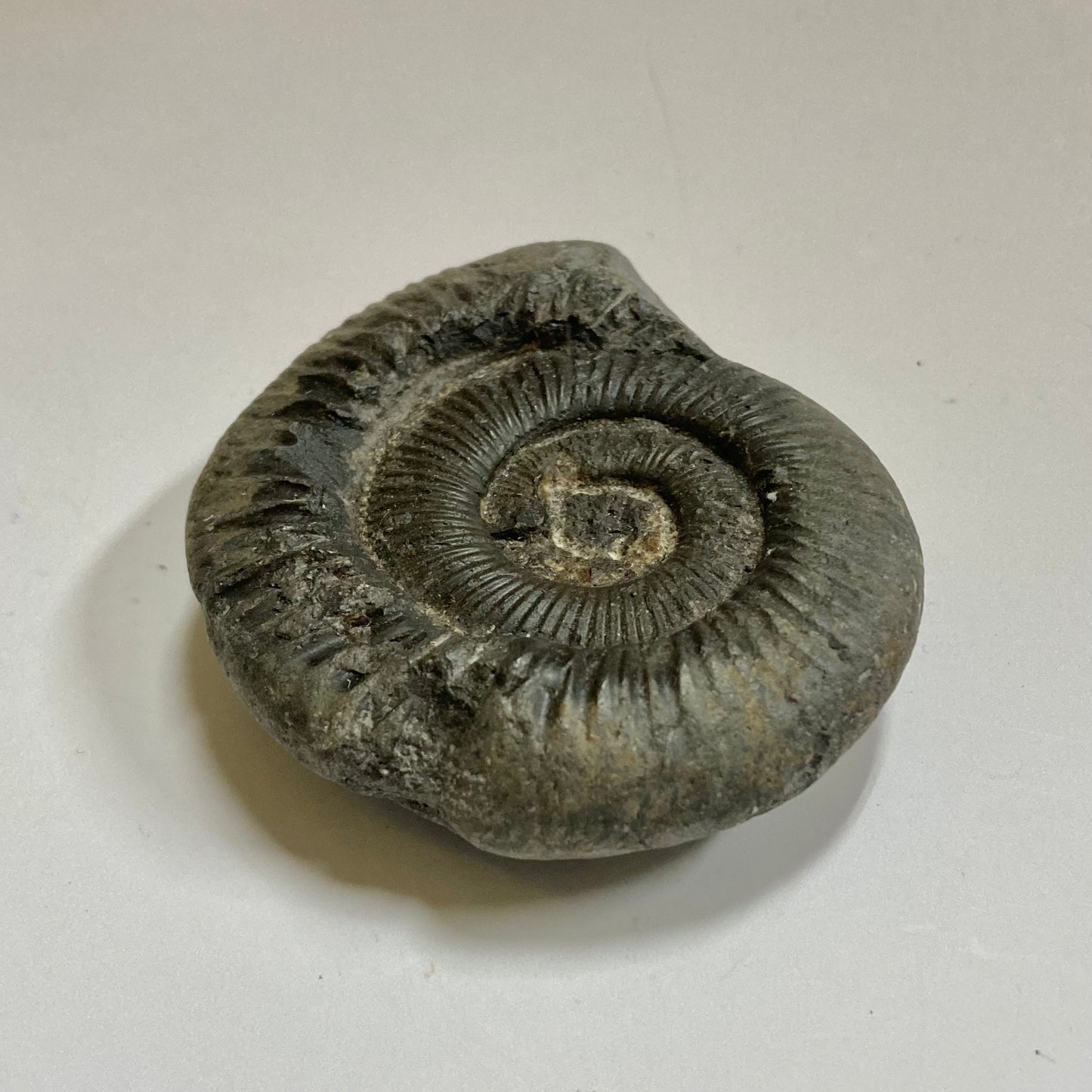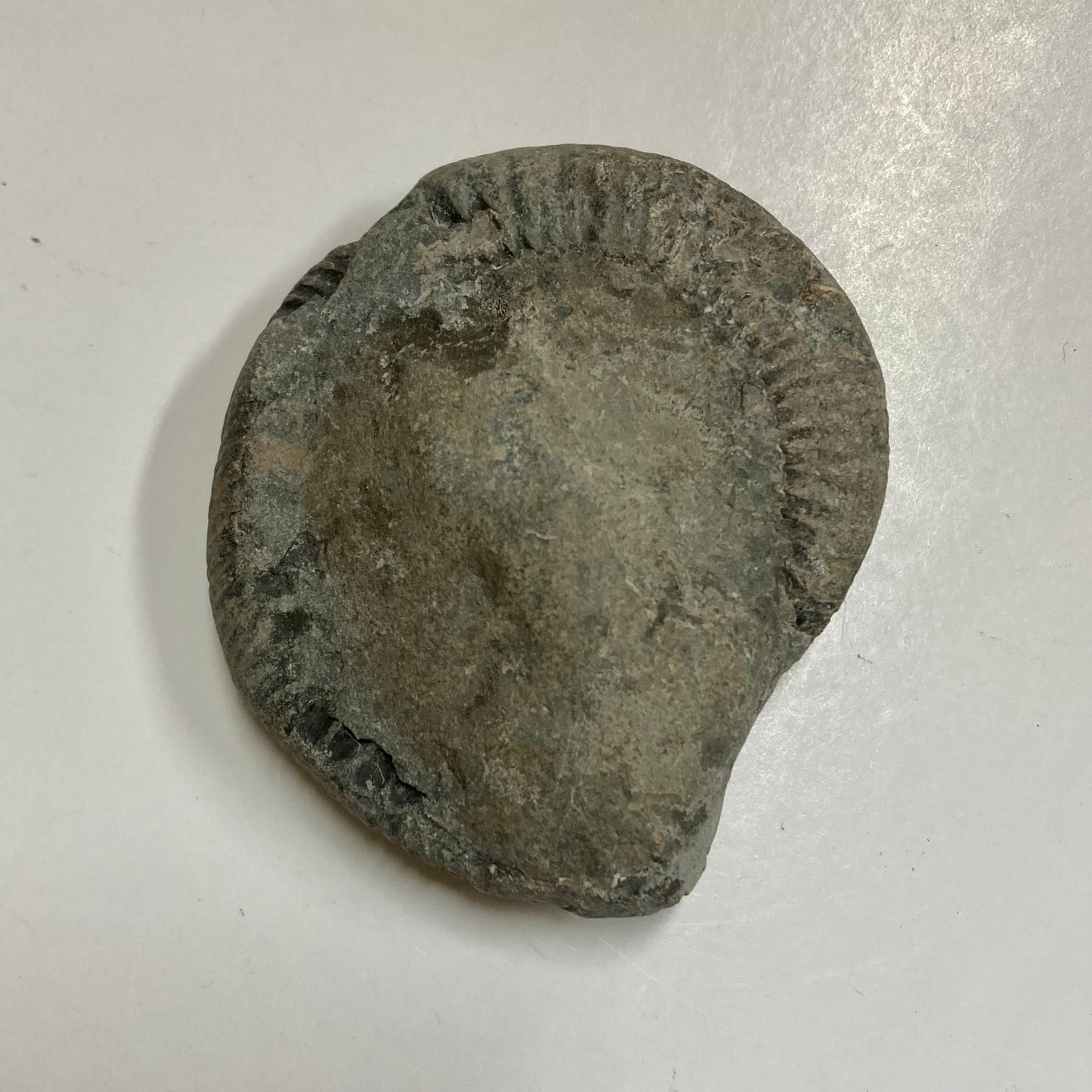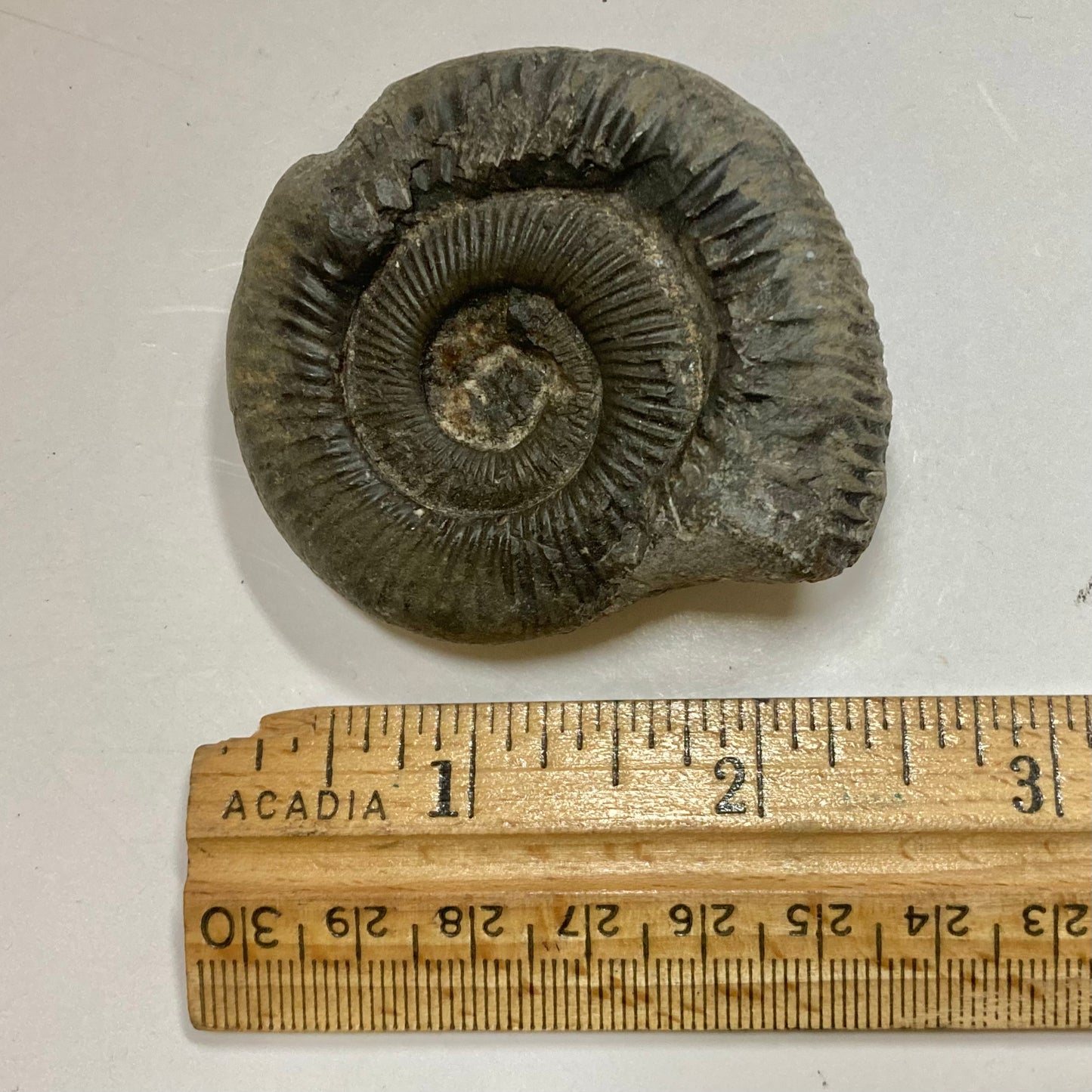Past & Present Science and Nature Store
Ammonite - Dactylioceras sp.
Ammonite - Dactylioceras sp.
Couldn't load pickup availability
The Dactylioceras genus of ammonites scavenged along the ocean floor of the Jurassic Period, about 180 million years ago.
This ammonite is named after the Greek word dactyl meaning "fingers" because of the many straight ribs on its relatively small but strong shell. Mass mortality specimens are found all over the world, especially in Europe, indicating Dactylioceras may have died shortly after traveling to a specific area for spawning, allowing their shells to wash up in large quantities on the banks of the Jurassic seas.
Ammonites are extinct shelled cephalopods that are most closely related to today’s octopus, squid and cuttlefish. The earliest ammonite appeared in the oceans during the Devonian period 360 million years ago and disappeared with the dinosaurs just 66 million years ago.
All had buoyant chambered shells that they lived in, sealing off old, too-small chambers as they grew with walls called “septa,” and moving into bigger ones. They moved by jet propulsion, expelling water through the small opening to push themselves in the opposite direction.
Ammonites were both predator and prey in the shallow waters of which they lived. They ate plankton, crustaceans, and fish by stalking and quickly wrapping their tentacles to grasp the animal. There also is evidence of larger marine animals like mosasaurs and ichthyosaurs eating ammonites.
There are over 10,000 species of ammonites that can be found all over the world. Parapuzosia seppenradensis is the largest species, reaching over 6 feet in diameter, but there are some species that were just a few millimeters long.
Type: Ammonite
Species: Dactylioceras sp.
Age: Jurassic (180 million years old)
Locality: Whitby Yorkshire, United Kingdom
Size: 2.38 x 2 x .69 inches
Weight: 2.45 oz.
Share
